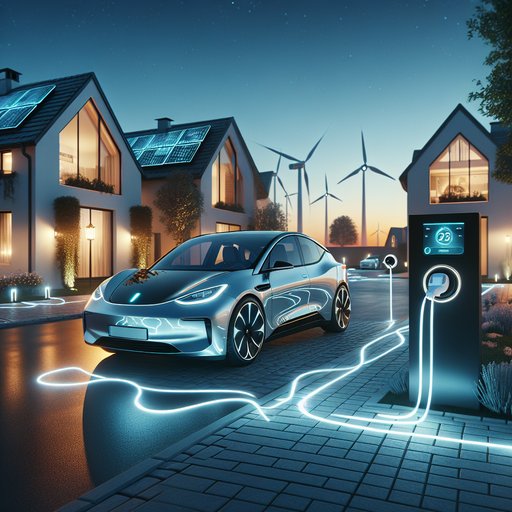
Electric vehicles are quietly acquiring a second identity: mobile batteries that can feed electricity back to homes, businesses, and the wider grid. Vehicle-to-grid technology, enabled by bidirectional charging and smart software, allows parked EVs to supply power during peak demand, smooth volatility from renewables, and improve grid resilience. As electrification accelerates and renewable generation grows, this flexible storage—distributed across driveways and depots—offers a practical way to balance supply and demand without building entirely new power stations.
Electricity systems everywhere are grappling with higher peaks, sharper ramps, and the variability of wind and solar. Traditional solutions—peaker plants and long-distance transmission—are capital intensive and often carbon intensive. Meanwhile, cars sit parked most of the day with batteries sized for the rare long trip. Vehicle-to-grid technology connects these idle kilowatt-hours to the power system, creating a flexible resource that can be summoned precisely when needed.
At its core, V2G relies on bidirectional power flow and communication between the vehicle, charger, and grid. Standards such as ISO 15118-20 define secure messaging for bidirectional charging, while interconnection rules like IEEE 1547 and SAE J3072 govern how a vehicle exports power safely to a building or feeder. In practice, an aggregator coordinates hundreds or thousands of EVs, scheduling discharge when prices or grid conditions justify it and preserving driver mobility needs. Related modes—vehicle-to-home and vehicle-to-building—use the same hardware to support premises during outages or peak periods, with optional participation in grid programs where rules allow.
The services EVs can provide span peak shaving, frequency regulation, and fast reserves that help keep voltage and frequency within tight bounds. Demonstrations in the United Kingdom have shown households earning meaningful savings by exporting from their EVs during evening peaks, while still charging cheaply overnight. In Japan, bidirectional systems developed for the Nissan LEAF supported homes and community facilities after the 2011 earthquake, underscoring resilience benefits. In the United States, pilots have delivered frequency regulation from aggregated EVs to regional markets, validating performance and responsiveness.
Fleets are emerging as early winners because their operations are predictable and vehicles dwell for long stretches. Electric school buses, which charge during the day and sit idle overnight and in summer, are already supplying energy back to the grid in projects in places like Virginia and Massachusetts. These programs combine grid services revenue with depot demand-charge management, reducing electricity bills for fleet operators while providing capacity when regional demand spikes. Workplace fleets, delivery vans, and municipal vehicles offer similar profiles, opening large pools of controllable storage without sacrificing service reliability.
For system operators, mobile storage helps defer expensive infrastructure upgrades and complements renewable generation. When solar output falls at dusk, an orchestrated discharge from thousands of EVs can bridge the gap until wind picks up or demand subsides. Because EVs are distributed close to loads, they can alleviate local bottlenecks and reduce distribution losses. The scale is significant: if, in principle, 10 million EVs each provided 7 kilowatts for two hours, the contribution would rival dozens of peaker plants for the evening peak.
Technical and operational challenges are real but tractable. Battery wear is a common concern, yet studies indicate that controlled cycling within moderate state-of-charge windows adds minimal degradation, and thermal management can even improve longevity. Hardware costs for bidirectional chargers are falling, and wider adoption should bring further reductions, especially as DC systems scale and onboard inverter capabilities expand. Interoperability remains a priority, with CHAdeMO already supporting V2G and CCS enabling it through ISO 15118-20; certification regimes and cybersecurity frameworks are maturing alongside.
Policy and market design determine how fast V2G scales. In the United States, FERC Order 2222 directs wholesale markets to allow aggregated distributed energy resources—including EVs—to participate, enabling revenue for grid services. The European Union’s clean energy market rules similarly recognize independent aggregators, and several national grid operators have launched flexibility markets where EVs can bid capacity and ancillary services. Utilities and regulators are refining tariffs, metering, and interconnection processes so drivers are paid transparently for exports, while consumer protections ensure mobility needs always come first.
The outlook is practical and near term: fleets, depots, and workplaces will lead, with households following as standards stabilize and bidirectional equipment becomes plug-and-play. Automakers and charger manufacturers are rolling out models that support vehicle-to-home today and are testing grid-facing capabilities in partnership with utilities. As participation grows, even a small fraction of the EV fleet available at peak can materially improve reliability, reduce emissions, and cut costs for everyone connected to the network. Electric cars are no longer just a load on the system—they are becoming part of the system, a flexible power plant on wheels that strengthens the grid when it matters most.











































